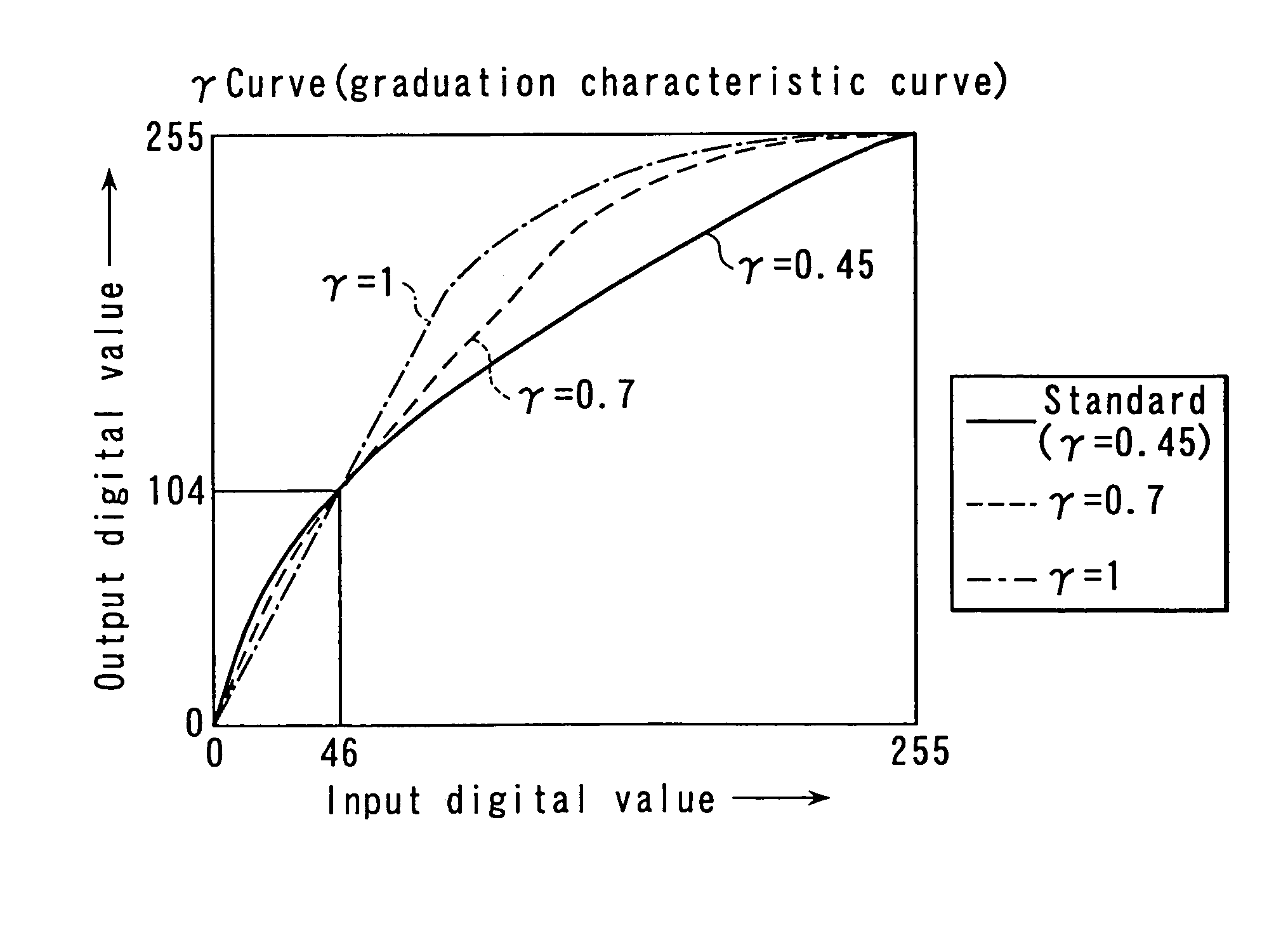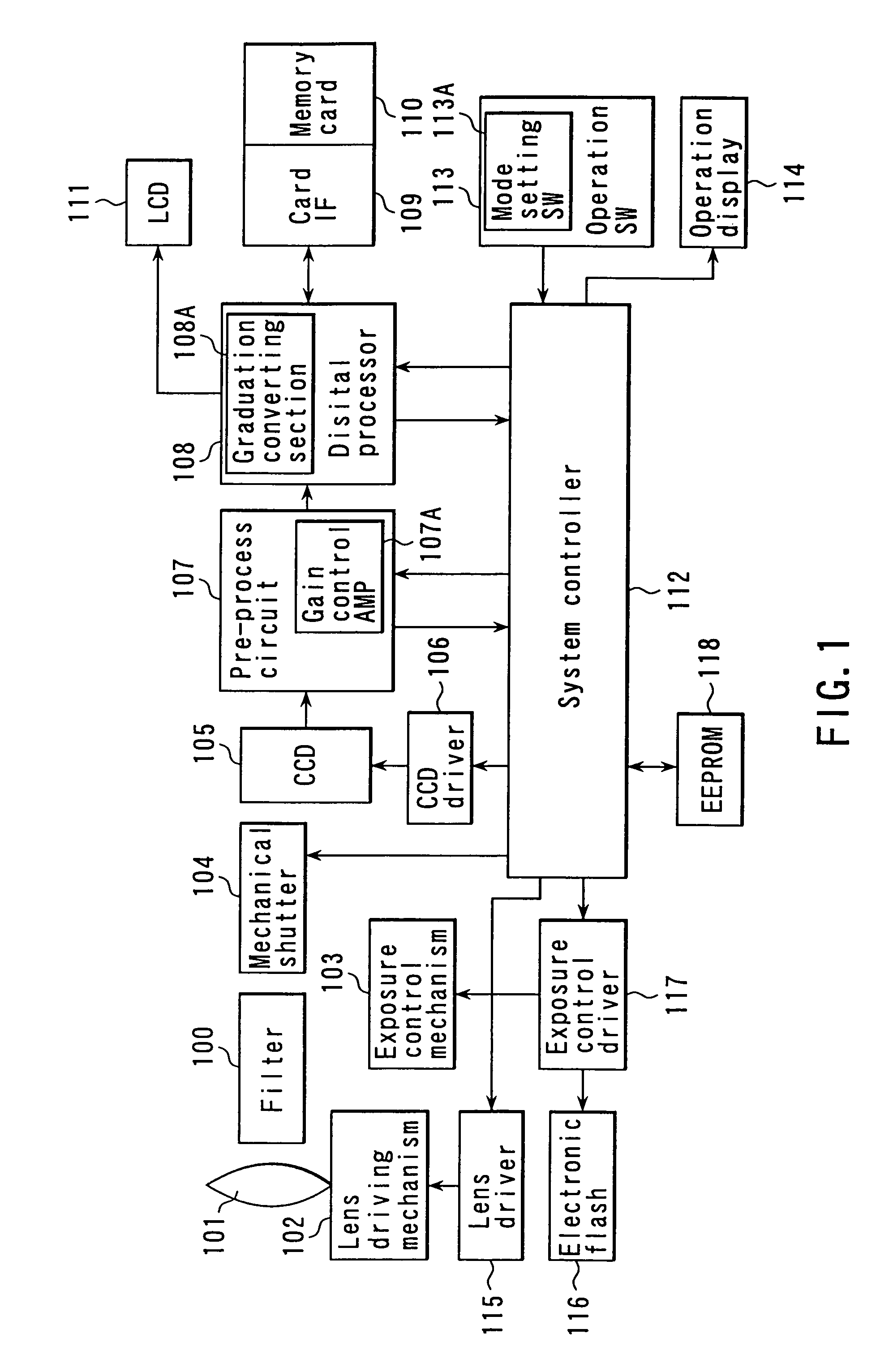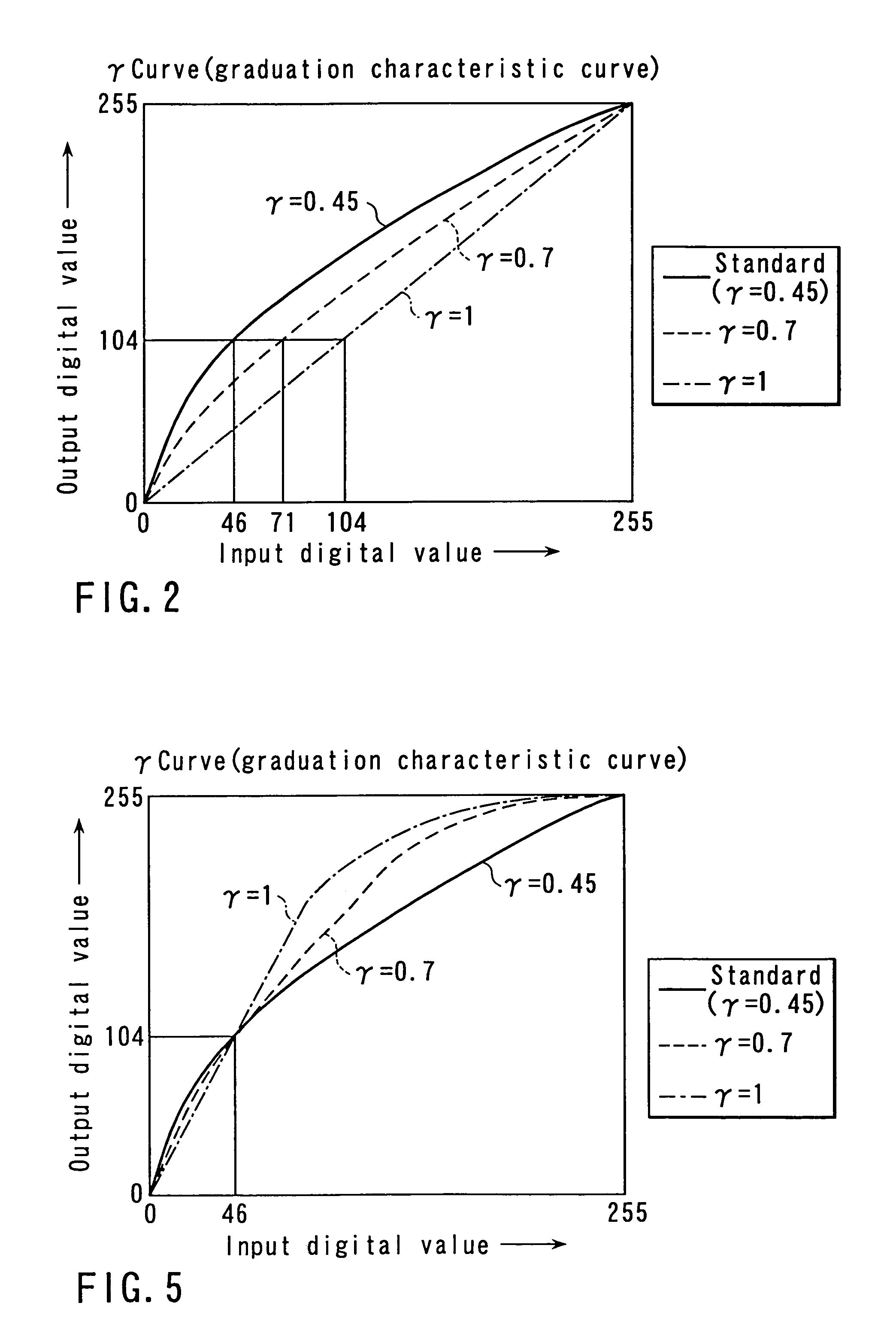Imaging apparatus in which exposure control is performed to suppress changes in sensitivity due to changes in gradation mode
a technology of exposure control and exposure control, applied in the field of imaging apparatus, can solve the problems of large changes in output level, inability to obtain an equal output level over a whole luminance distribution of the photographic subject, and inability to achieve the effect of sensitivity and output level
- Summary
- Abstract
- Description
- Claims
- Application Information
AI Technical Summary
Benefits of technology
Problems solved by technology
Method used
Image
Examples
Embodiment Construction
[0082]A detail of a digital camera according to an embodiment of the present invention will be described hereinafter with reference to the drawings.
[0083]FIG. 1 is a block diagram showing a circuit configuration of the digital camera according to one embodiment of the present invention. In FIG. 1, reference numeral 101 denotes a photography lens system constituted of various lenses for photographing a photographic subject, 102 denotes a lens driving mechanism for driving the lens system 101 in accordance with the photographic subject, and the lens driving mechanism 102 drives the photography lens system 101 to focus the photography lens system 101 on the photographic subject. Light rays reflected from the photographic subject are directed to CCD unit 105 via the lens system 101 and a stop included in an exposure control mechanism 103. In the exposure control mechanism 103, the stop is adjusted, the light rays passed through the stop is controlled and an exposure amount is controlled...
PUM
 Login to View More
Login to View More Abstract
Description
Claims
Application Information
 Login to View More
Login to View More - R&D
- Intellectual Property
- Life Sciences
- Materials
- Tech Scout
- Unparalleled Data Quality
- Higher Quality Content
- 60% Fewer Hallucinations
Browse by: Latest US Patents, China's latest patents, Technical Efficacy Thesaurus, Application Domain, Technology Topic, Popular Technical Reports.
© 2025 PatSnap. All rights reserved.Legal|Privacy policy|Modern Slavery Act Transparency Statement|Sitemap|About US| Contact US: help@patsnap.com



